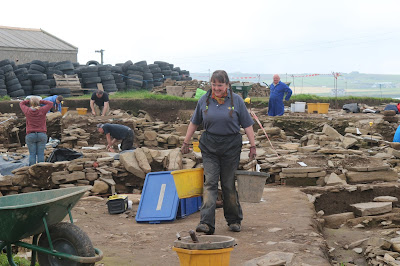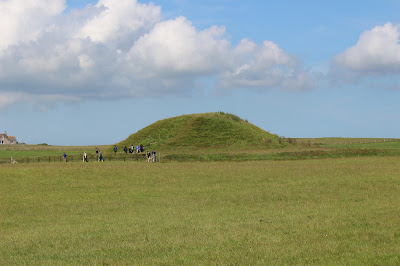The Ness is widely acclaimed as the most important Neolithic site in Northern Europe and its uncovering has been an ongoing project since 2003. Because of financial constraints (and the Orcadian weather), the work is restricted to 6 - 8 weeks during July and August. Each year more and more is discovered and the age of the site is being pushed back. It's now thought to date from the early Neolithic period (about 3500-3000 BC) but this could change as more is found out. A key finding is that what can be seen now is built on top of earlier buildings and these have yet to be properly investigated or dated. So how far back does it actually go?
What was the function of the complex of buildings at Brogdar? The archaeology rules out a domestic function and the theory is that its use was ceremonial in some way. Ah, ceremonial - a catch-all word for "we don't really know". Perhaps as the project continues and more of the site is revealed (about 10% of it has been uncovered so far), its function will become clearer. At the moment we can only speculate and marvel at what is there to be seen now.
One of the great things about the Ness dig is the way that it is open to the public. Throughout the season, free guided tours are given every day by one of the archaeologists and it is fascinating being shown around by someone who has an intimate knowledge, not just of the history of the site, but also the practicalities of doing the actual work. Our guide, Roy Towers, an academic in the Archaeology Institute at the University of the Highlands and Islands, was excellent, with a very easy going manner and very dry wit. If you want to follow what's going on at the Ness, you can access their daily dig diary/blog by searching for Orkneyjar. It's worth the effort as you can see history being uncovered as it happens.
 |
| We got there and the site was bare..................... |
 |
| ....because the army of diggers were on their mid-morning tea break! |
 |
| But they were soon back hard at the scraping with trowels.... |
 |
| .....measuring everything meticulously...... |
 |
| ...drawing and recording absolutely everything............. |
 |
| ...and carting away all the waste material - by the bucket and barrow full. |








No comments:
Post a Comment